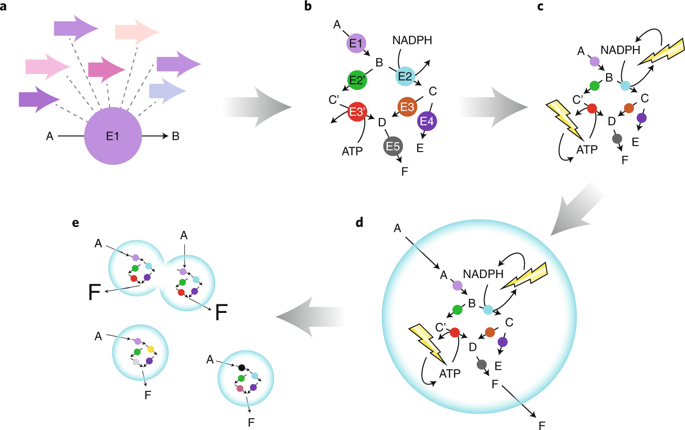Nature Catalysis ( IF 42.8 ) Pub Date : 2020-03-18 , DOI: 10.1038/s41929-020-0429-x Simon Burgener , Shanshan Luo , Richard McLean , Tarryn E. Miller , Tobias J. Erb

|
Modern-day chemical synthesis is still mainly a linear process that focuses on the design and optimization of single catalysts and reactions. By contrast, (bio)synthesis in nature is carried out by metabolic networks that are highly integrated, self-optimizing, multi-catalyst systems operating out of thermodynamic equilibrium. This allows the continuous, self-improving, multi-step synthesis of compounds from sustainable starting materials under mild and environmentally friendly conditions. While our capabilities to build catalytic systems of similar performance have been limited so far, current developments in chemistry, material sciences and synthetic biology open new paths technologically and conceptually. In this Perspective, we develop the idea that the future of catalysis is bio-inspired integrated catalytic systems that show life-like properties and provide a roadmap towards achieving this goal along five key steps: the design of biocatalysts, their combination into complex catalytic networks, the coupling of these reaction networks to energy modules, their compartmentalization and finally, their endowment with Darwinian properties.
中文翻译:

未来集成催化系统的路线图
现代化学合成仍然主要是线性过程,其重点在于单一催化剂和反应的设计和优化。相比之下,自然界中的(生物)合成是通过代谢网络进行的,这些代谢网络是高度集成的,自我优化的,在热力学平衡之外运行的多催化剂系统。这允许在温和且环境友好的条件下,从可持续的原材料连续,自我完善,多步合成化合物。尽管到目前为止我们建立类似性能的催化系统的能力受到限制,但是化学,材料科学和合成生物学的最新发展在技术和概念上开辟了新的道路。从这个角度来看,











































 京公网安备 11010802027423号
京公网安备 11010802027423号